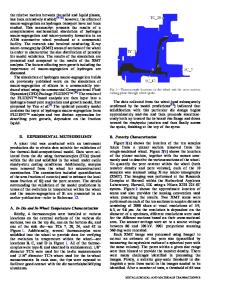Modeling of microporosity formation in A356 aluminum alloy casting
- PDF / 403,339 Bytes
- 11 Pages / 576 x 792 pts Page_size
- 66 Downloads / 325 Views
I. INTRODUCTION
THE mechanism of microporosity formation in aluminum alloy casting is complex owing to its dependence on the interaction of a number of phenomena occurring during solidification including the decrease in hydrogen solubility, volumetric shrinkage, the development of the solidification structure and mass transport. Over the past two decades, there have been numerous models developed to predict microporosity formation in castings. Early versions relied on criteria functions,[1–10] including, for example, the function proposed by Niiyama et al.,[1,2] which is based on the ratio of the thermal gradient, G, to the square root of the cooling rate R. The advantage of these criteria functions is that they provide a straightforward means of assessing the influence of various casting parameters such as thermal gradient, cooling rate, and solidification time on porosity. They are also easy to implement and quick to run in process heat-transfer models. The main drawbacks of criteria functions are their insensitivity to varying hydrogen concentration (in aluminum alloys) and consequently generally poor quantitative capability. In order to predict porosity accurately, more fundamentally based models have been developed in recent years.[11–19] These models relate porosity formation to the local metal pressure and typically also consider the variation in hydrogen solubility together with a hydrogen mass balance. Various approaches have been adopted to solve for the pressure field within the developing interdendritic network. These J.D. ZHU, Research Associate, S.L. COCKCROFT, Professor and Department Head, and D.M. MAIJER, Assistant Professor, are with the Department of Materials Engineering, The University of British Columbia, Vancouver, BC, Canada V6T 1Z4. Contact e-mail: [email protected] Manuscript submitted April 28, 2005. METALLURGICAL AND MATERIALS TRANSACTIONS A
range in sophistication from straightforward analytical expressions, derived on the basis of steady-state solidification conditions,[19] to more realistic transient solutions, based on models describing flow through porous media (Darcy’s Law) coupled with mass conservation expressions.[14,15,16] One of the more recent contributions is a “Mushy-Zone Refinement Method” proposed by Rappaz et al., to simulate Darcy flow and porosity formation.[23] In most of the conventional work, it has been assumed that the radii of nucleated pores are a function of the secondary dendrite arm spacing, and that the pore is in equilibrium (in terms of hydrogen activity) with the liquid or the liquid and solid. Research in the area of pore nucleation includes recent work to visualize the nucleation and growth of individual pores using X-ray tomography coupled with simulations to predict the location and final size of pores.[20,21,22] Other contributions include work by Ohnaka et al., who have simulated oxide entrapment during mold filling and porosity nucleation on oxides entrapped within the melt.[24] In terms of pore growth, it was pointed out by Lee et al.[21,22] t
Data Loading...











